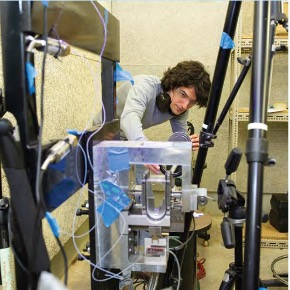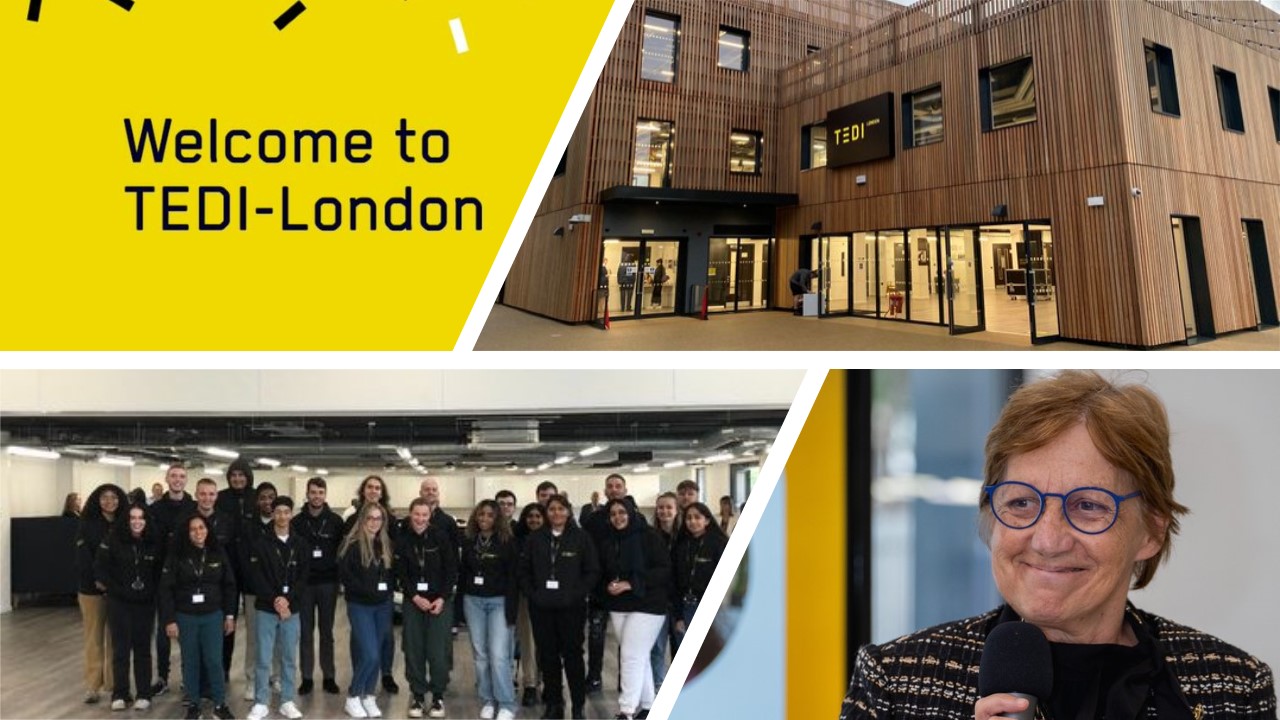PLuS Alliance partner Arizona State University are making preparations for a “first light” experiment — a pivotal moment that will lead to ASU becoming the birthplace of the compact X-ray free electron laser (CXFEL), anticipated to be the first of its kind in the world.
The instrument, which will be capable of peering deep into soft tissues and viewing the dance of molecules, was dedicated to the donors who helped make it possible in a campus ceremony Thursday (26th) morning.
Leo and Annette Beus made a $10 million gift that enables pioneering research and discovery and is hailed as transformational for the university.
Bio design Institute Executive Director Joshua LaBaer compared the instrument to the introduction of the personal computer as a paradigm shift for society.
“We’re here because we’re about to witness the same sort of paradigm shift here at Arizona State University,” he said. “This is the only university on Earth that will have such a device. This is a huge event for all of us.”
Normally X-ray free electron lasers in the world are two miles long and booked years in advance by scientists for a few hours of time. ASU’s new tool will fit inside a traditional laboratory space. It will be able see things that are invisible to conventional X-rays. And more scientists than ever before will have the opportunity to advance their research with the new tool.
The laser will send pulses of X-rays at a femtosecond — one quadrillionth of a second — enabling researchers to film molecules in action. Its capabilities include medical imaging, studying the behavior of quantum materials, and seeing how proteins are shaped in molecules.
“This is going to change what we do, in a device that’s going to be accessible to scientists at a university,” Commented LaBaer.
“That’s what we’re so excited about here.”
ASU President Michael Crow quoted Mark Twain: “If we could only understand the workings of a single blade of grass, I would believe humans are more than animals.” and energy.
“This device is nothing more than the extension of the imaginations of not only our scientists and engineers, but thousands and thousands of scientists and engineers around the world who are trying to figure out how do we actually understand how nature works,” Crow said and praised the Beuses’ generosity.
“The exciting thing for me here today is to have the opportunity to recognize Leo and Annette Beus and the Beus family for their willingness to continue their journey with ASU in what we’re doing,” he said.
Neither Leo Beus, a prominent attorney, nor his wife, Annette, attended ASU, but they’ve been involved with the university for almost a decade. They funded the Beus Center for Law and Society — the home of the Sandra Day O’Connor College of Law — supported Sun Devil Athletics and provided numerous scholarships to increase student access to a college education.
“This is a really fun day for us,” Annette Beus said. “We’re very happy that a lot of our family and grandchildren are now attending ASU. Together it has become the institution of our hearts. I have to say of all the things we have done in our life, this has the most potential to help humanity. For that reason, we are thrilled to be a part of it. He has to hurry up and win some more cases, because I’m sold on this.”
Leo Beus’ interest in the laser came about through a chance meeting with Petra Fromme (pictured), the Paul V. Galvin Professor of Molecular Sciences, on a flight to San Diego. Fromme explained to Beus her radical new plan.
“After I got off the airplane, I shot a note to President Crow saying I met one of the most delightful, phenomenal, fantastic, wonderful human beings I have ever met,” Beus said. “And her name was Petra Fromme. She is one of the head scientists on this project.”
ASU’s new instrument has the potential to be a force-multiplier for discovery. It may one day give scientists and medical researchers throughout academia, industry and medicine access to brilliant X-rays in their own laboratories, accelerating and broadening scientific discovery like never before.
This is an abridged version of the article that appear on the CXFEL X-ray free electron laser - ASU website on 26th September


